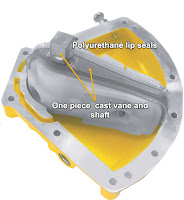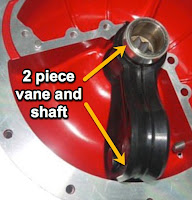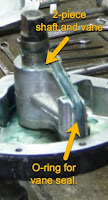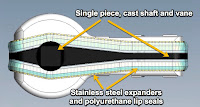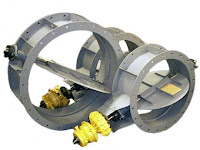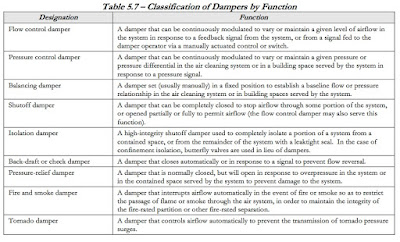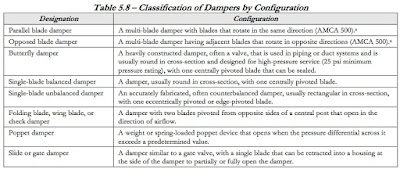Harsh Conditions, No Downtime in a Cement Plant
Kinetrol’s rotary vane actuator (mounted under a cement hopper) and its VLS limit switch box endure layers of fine cement dust and constant equipment vibration while continuing to function flawlessly. In this Northern California cement plant, a gray film of cement powder coats every surface (as seen above), yet the Kinetrol actuator and limit switch keep performing with zero maintenance. Plant engineers cite these units as a rare “fit-and-forget” solution in an environment where most equipment struggles to survive.Maintenance-Free Design Built for Extremes
What makes Kinetrol actuators and their companion limit switch boxes so resilient in such harsh conditions? The answer lies in robust engineering and a simplicity of design purpose-built for longevity. Each rotary vane actuator contains only a single moving part – an integral vane and shaft – which means there are no delicate gears or multiple linkages to wear out or misalign. Fewer moving parts translate directly to higher reliability and very low maintenance. In fact, Kinetrol’s one-moving-part design is inherently a sealed system that keeps contaminants out. Double opposed polyurethane lip seals on the shaft serve as self-adjusting wipers that prevent dust ingress and maintain a tight seal over time. As the actuator cycles millions of times, these lip seals (backed by stainless steel spring expanders) continuously compensate for any wear, ensuring the internal components remain protected and pressurized air doesn’t leak.The VLS limit switch box shares the same rugged philosophy. Housed in a fully enclosed, die-cast metal casewith a corrosion-resistant epoxy coating, the VLS unit is sealed to IP67/NEMA 6 standards. This means that even the finest cement dust cannot penetrate the enclosure, and the internal switches and electronics remain clean and protected. The tight sealing also guards against moisture and grit, so the limit switches reliably indicate valve position without fouling or sticking. In practice, maintenance crews at the cement plant never need to open these switch boxes to clean them out – a stark contrast to lesser designs that might require frequent cleaning or gasket replacements in dusty service.
Real-World Proof of Long-Term Reliability
Kinetrol’s reputation for ruggedness isn’t based solely on one plant – it’s reinforced by countless applications across industries. For over 50 years, Kinetrol has been supplying “trouble-free” pneumatic rotary actuators to demanding sectors such as chemical processing, mining (mineral processing), oil and gas, power generation, and water treatment. In each case, the story is similar: the actuators simply keep working year after year, often outlasting the equipment around them. A plant engineer from another facility quipped that the Kinetrol units “last so long, we sometimes forget they’re even there until we notice everything else has needed maintenance except them.”Consider a case from the chemical industry: a southeastern US chemical plant installed a Kinetrol Model 187 actuator on a critical valve back in 1997. That actuator has been cycling every two minutes, 24/7, for decades – tallying over 5 million cycles – and it is still in service today. The original actuators (of a scotch-yoke design) that were on that valve had been failing due to seal leaks and jamming, but the Kinetrol replacement solved the reliability issues overnight. It’s a testament to Kinetrol’s engineering quality that even after nearly thirty years in a harsh process (processing reactor off-gas), the vane actuator remains operational with no major repairs.
Another example comes from a steelworks handling abrasive slurries. There, a Kinetrol spring-return actuator was paired with a butterfly valve to replace an earlier actuator that kept failing due to slurry ingress and wear. After months in operation, the new Kinetrol-driven valve showed no signs of wear and dramatically reduced maintenance needs. Such success stories have led many plants to adopt Kinetrol as their standard for critical valves and dampers. In the words of one plant manager, “We needed actuators that could survive literally anything – heat, dust, you name it. Kinetrol delivered, and we haven’t looked back.”
It’s not just marketing speak to call Kinetrol actuators “simply the best” in quarter-turn actuation – the industry has watched them perform where others failv. With an environmentally rugged design and outstanding cycle life, they have earned a loyal following. Even competitors’ engineers acknowledge the long service life and dependability of the Kinetrol units. As one distributor commented, “Kinetrol’s are great actuators and we love supplying them!”. This kind of praise underscores the broad confidence in Kinetrol’s ruggedness and engineering quality.
Conclusion: Engineering You Can Rely On
The cement plant in Northern California is a powerful demonstration of Kinetrol’s durability. In an environment that combines every possible stress factor – abrasive dust, high heat, continuous vibration, and round-the-clock operation – the Kinetrol standard pneumatic actuators and VLS limit switch boxes continue to excel with truly maintenance-free performance. Months and years pass with virtually no attention needed from the maintenance team, freeing them to focus on other equipment. The actuators stroke open and closed reliably, and the limit switches faithfully report positions to the control system without fail.For plant operators and engineers, this level of reliability translates into peace of mind and lower lifetime costs. There are no surprise shutdowns due to actuator failure, no weekly lubrication rounds, and no stockpile of replacement parts needed. Kinetrol’s “fit and forget” philosophy is more than a catchphrase – it’s a reality backed by decades of field experience and a design that prioritizes simplicity, strength, and seal integrity. When other actuators seize up or wear out under extreme conditions, Kinetrol units keep on turning. This exceptional longevity and ruggedness make Kinetrol actuators and VLS limit switches a smart choice for any operation where downtime is not an option and equipment must survive the harshest conditions. In short, if you need an actuator solution that laughs in the face of cement dust and heat, Kinetrol has proven time and again that it can deliver exactly that.
For professional industrial audiences looking for long-term reliability, the message is clear – when the going gets tough, Kinetrol actuators keep going, year after year, cycle after cycle, without maintenance and without fail.
Kinetrol USA
https://kinetrolusa.com
972-447-9443










